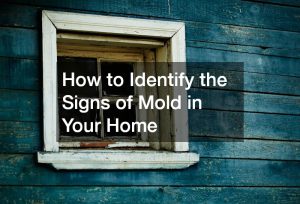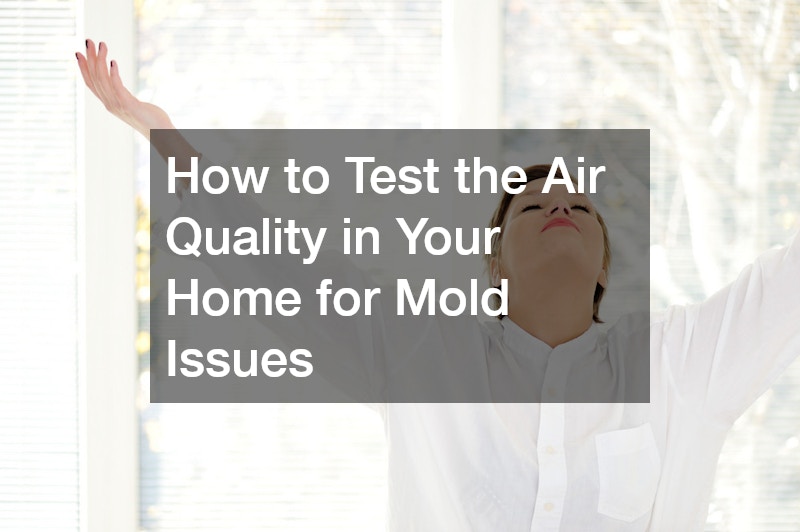Introduction
Maintaining good indoor air quality (IAQ) ensures a healthy and comfortable living environment. The air we breathe inside our homes can significantly impact our overall well-being, particularly when harmful pollutants, allergens, or moisture-related issues like mold compromise it. Mold, in particular, is one of the most common and potentially dangerous indoor air contaminants. It can spread unnoticed, especially in damp and poorly ventilated areas, posing health risks to everyone in the household.
Mold spores, microscopic and often invisible to the naked eye, can become airborne, infiltrating the air we breathe. These spores can lead to various health issues, especially for individuals with allergies, asthma, or other respiratory conditions. Symptoms of mold exposure range from mild irritations like sneezing, coughing, and itchy eyes to more severe reactions such as difficulty breathing, chronic fatigue, and even skin rashes. In some cases, prolonged exposure to certain types of mold, like black mold (Stachybotrys), can result in more severe health complications.
What makes mold particularly insidious is its ability to grow in hidden areas—behind walls, under flooring, or inside HVAC systems—making it difficult to detect with the naked eye. Mold thrives in areas with excess moisture, commonly found in bathrooms, kitchens, basements, and anywhere that has experienced water damage. Given that it often remains unseen, testing the air quality in your home is essential to detect any hidden mold problems and prevent further spread.
This guide is designed to help homeowners proactively approach mold detection and prevention. It will walk you through various methods for testing the air quality in your home, specifically for mold, from simple DIY kits to professional services. By following these steps, you can ensure a healthier, safer, and mold-free living space for you and your family.
1. Why Mold is a Concern for Homeowners
Mold is a type of fungus that grows in moist environments. It is commonly found indoors, particularly in damp areas such as basements, bathrooms, and attics, where it can spread rapidly. Among the various types of mold, black mold is one of the more concerning due to its potential health impacts. Mold thrives in homes because of consistent humidity and access to organic materials to feed on. Homeowners need to be vigilant about damp conditions that can encourage mold growth.
Exposure to mold can lead to a wide range of health issues, from mild allergic reactions to more severe respiratory problems. Symptoms often include sneezing, coughing, skin irritation, and, in some cases, headaches. Prolonged exposure can particularly affect individuals with pre-existing respiratory conditions like asthma or those with weakened immune systems. It’s crucial to address mold concerns promptly to prevent these health challenges from exacerbating. Understanding the risks highlights the urgency of identifying mold growth in its early stages.
Beyond health implications, mold can cause structural damage and devalue properties. When left unchecked, mold can infest building materials such as wallpaper, insulation, and drywall, which can compromise structural integrity. This leads to expensive remediation costs as significant repairs and mold removal become necessary. Consequently, the presence of mold can lower property values, making it harder to sell or rent homes. Homeowners should take preventive measures and address mold issues proactively to maintain both health and property value.
2. How to Identify the Signs of Mold in Your Home

Visible mold growth is one of the easiest ways to identify a problem. Mold appears as black, green, or white spots and is frequently found in moisture-prone areas like bathrooms, kitchens, windows, and ceilings. These surface-level indicators can be widespread and sometimes require careful inspection to detect. Homeowners should regularly check behind furniture, under sinks, and in hidden sections of the home where mold might be thriving unnoticed. Mold growth in these areas can quickly escalate if not addressed.
A persistent musty odor is often a strong indicator of hidden mold growth within the home. Even when mold is not visible, its presence can be suggested by an unpleasant smell that lingers despite cleaning. This odor is produced by compounds released by the mold as it grows. A continuous musty odor necessitates further investigation to uncover and address the source. Sometimes, this scent might lead you to home areas requiring more thorough mold testing and inspection.
Sudden increases in allergies or respiratory issues among household members might also indicate mold exposure. Mold spores, when inhaled, can aggravate health problems, manifesting in unusual or intense allergies and difficulty breathing. Individuals with sensitivities or pre-existing conditions may experience heightened reactions when mold is present. Monitoring household health, especially after floods or leaks, can be crucial for timely mold detection. Keeping track of any health changes and correlating them with environmental conditions can provide early warnings of mold issues.
3. How to Test the Air Quality in Your Home for Mold
Conducting a visual inspection is the first step in testing the air quality in your home for mold. This involves a thorough home walkthrough, with attention to common mold-prone areas such as bathrooms, basements, and attics. It’s helpful to consider looking behind furniture, under sinks, and into crawl spaces for any signs of mold. Noticing discoloration or spots in these regions could indicate a problem worth further investigation. Even if no significant growth is visible, smaller patches might be the beginning of more severe infestations.
For a more proactive approach, homeowners can utilize DIY mold testing kits. These kits are readily available at hardware stores and online, providing a convenient way to detect mold. To use them effectively, homeowners should follow the provided instructions, swabbing areas with visible mold or those that seem suspicious. Air sample collectors in the kits are crucial for checking airborne mold spores. After collecting samples, they should be sent to a lab for analysis, offering precise insights into mold presence.
In cases where mold issues seem extensive, or health concerns arise, investing in a professional mold testing service becomes crucial. Professionals have the expertise to conduct comprehensive tests, including air sampling, surface swabbing, and infrared inspections. These examinations ensure a thorough evaluation of the mold problem, identifying both visible and hidden mold sources. Professional testing often leads to more accurate results and offers peace of mind, especially for complex or severe cases. Seeking expert help is advisable when DIY efforts are insufficient or when a more robust approach is needed.
4. Understanding the Results of Mold Testing
Interpreting the results from a DIY mold test kit starts with understanding what the detected mold types signify. Each mold type has different implications for health and structural safety. The severity can vary based on the type and concentration of mold spores identified. Homeowners must be familiar with these aspects to properly assess the risk and decide on the appropriate action. Reading test results accurately is vital to making informed decisions regarding mold removal and prevention.
Indoor air quality standards define acceptable levels of mold spores and the threshold for hazardous conditions. These standards help gauge the severity of mold problems through spore count data. Acceptable levels indicate the indoor environment is within safe parameters, while elevated counts warrant immediate action. Differentiating between normal and excessive spore levels assists homeowners in taking timely and effective measures. Understanding these benchmarks is essential for maintaining healthy indoor air quality.
When test results reveal high mold levels, proactive remediation is necessary. Elevated mold counts suggest a need for thorough cleaning and possibly engaging professional services to address the situation. Mold removal may require specialized treatments to ensure safety and prevent recurrence, especially in extensive infestations. Acting swiftly to reduce mold levels can protect occupants’ health and preserve the home’s structural integrity. Consulting mold remediation experts might be prudent for severe cases, offering comprehensive solutions to restore safe air quality.
5. How to Improve Indoor Air Quality and Prevent Mold Growth
Maintaining optimal indoor humidity levels is essential in preventing mold growth. Mold thrives in humid conditions, often flourishing when indoor humidity exceeds 50%. To manage this, homeowners can utilize dehumidifiers, particularly in basements and naturally moist areas. Keeping humidity between 30-50% reduces mold proliferation risks. Monitoring and controlling humidity levels safeguard against mold and improve overall air quality.
Fixing leaks and addressing moisture problems promptly is crucial in preventing mold growth. Water leaks from plumbing, roofs, or gutters create ideal environments for mold. Timely repairs and regular inspections can mitigate these risks, preventing moisture accumulation. Ensuring dry and leak-free areas can halt mold problems before they start. Taking these preventative steps helps maintain the property’s structural health and prevents costly damage.
Proper ventilation in spaces like bathrooms and kitchens significantly helps reduce moisture levels. Exhaust fans and adequate air circulation can prevent dampness, a primary mold growth catalyst. Ensuring that windows are sealed properly while allowing for sufficient air exchange is crucial. Implementing these measures means controlling environmental conditions that favor mold. Ultimately, enhancing ventilation is vital for reducing moisture-related risks in frequently used areas.
6. When to Call in Professional Mold Remediation Services
Knowing when to seek professional mold remediation services is key when DIY efforts fall short. Sometimes, mold problems surpass the capabilities of at-home fixes and require expert assessment. Recognizing when mold growth is extensive or persistent health issues arise should prompt homeowners to call in professionals. Experts can deliver more thorough and permanent solutions, ensuring effective mold removal. Understanding the limits of DIY methods helps homeowners make timely decisions in managing mold problems.
Engaging professional mold remediation offers a structured approach, from containment to removal and cleanup. Professionals often follow meticulous processes, including air scrubbing and repairing affected areas. They ensure the mold is removed and prevent its return by addressing underlying causes. This comprehensive approach guarantees long-lasting results. Understanding the remediation process prepares homeowners for what to expect and provides peace of mind.
The cost of mold removal and prevention can vary, but it is often a worthwhile investment for protecting property and health. While professional services come with expenses, they are often more effective than multiple DIY attempts. Ultimately, addressing mold issues promptly can save more money than delays resulting in extensive damage. Considering the long-term benefits of professional intervention against potential costs can clarify its importance. Investing in prevention and remediation ensures safer living conditions and preserves property value.
Conclusion
Regularly testing for mold and maintaining good air quality in the home is essential for long-term health and comfort. Homeowners can take informed steps toward addressing mold issues by understanding how to identify mold, test indoor air quality, and interpret results. Implementing preventative measures helps improve conditions and minimize future risks. Homeowners are encouraged to be proactive, regularly testing air quality for mold to combat underlying threats. Taking these steps is vital to protecting one’s property and safeguarding loved ones’ health.
